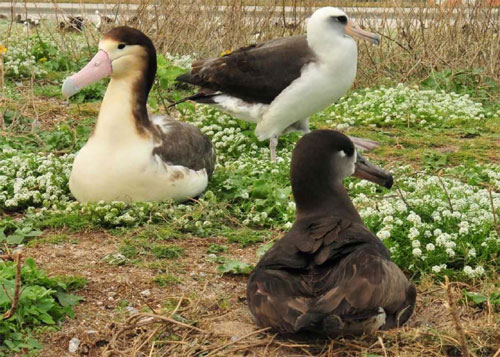The Macaulay Library based in the Cornell Lab of Ornithology at Ithaca, New York, USA is stated to be the world's largest and oldest scientific archive of biodiversity audio and video recordings.
The library's mission is to collect and preserve audio and video recordings of each species' behaviour and natural history, to facilitate the ability of others to collect and preserve such recordings and to promote the use of these recordings for scientific research, education, conservation and the arts.
The Library contains over 110 000 sound recordings and over 38 000 video clips. Among these totals the Order Procellariiformes is covered by 542 sound recordings and 592 video recordings. However, the coverage for ACAP-listed albatrosses, petrels and shearwaters is patchy (13 out of 30 species), with 88 audio and 396 video recordings on file for albatrosses of only six species.
Most of these recordings are for Wandering Albatrosses Diomedea exulans, Laysan Albatrosses Phoebastria immutabilis and Black-browed Albatrosses Thalassarche melanophris, with fewer recordings for Northern Royal D. epomophora and Black-footed P. nigripes Albatrosses (audio only) and both sooty albatrosses Phoebetria spp. (video only).
Audio recordings are available for Southern Giant Petrels Macronectes giganteus and Grey Procellaria cinerea, White-chinned P. aequinoctialis and Westland P. westlandica Petrels, with video recordings on file for both species of giant petrels.

The three North Pacific albatrosses all together! Photograph by James Lloyd
The Macaulay Library encourages "recordists around the world to contribute their recordings and data to what has become an irreplaceable resource. Once you make the step to share your recordings, we take our job seriously, to ensure that your recordings and the work of others will be preserved for generations to come."
A challenge then for those studying ACAP-listed species to boost the library's coverage from thirteen to thirty.
See also the Internet Bird Collection for more video and audio recordings of procellariiform seabirds, including for some albatross and petrel species not listed above.
With thanks to Patricia Baird and Alice Gomez for information.
John Cooper, ACAP Information Officer, 20 October 2012

 English
English  Français
Français  Español
Español